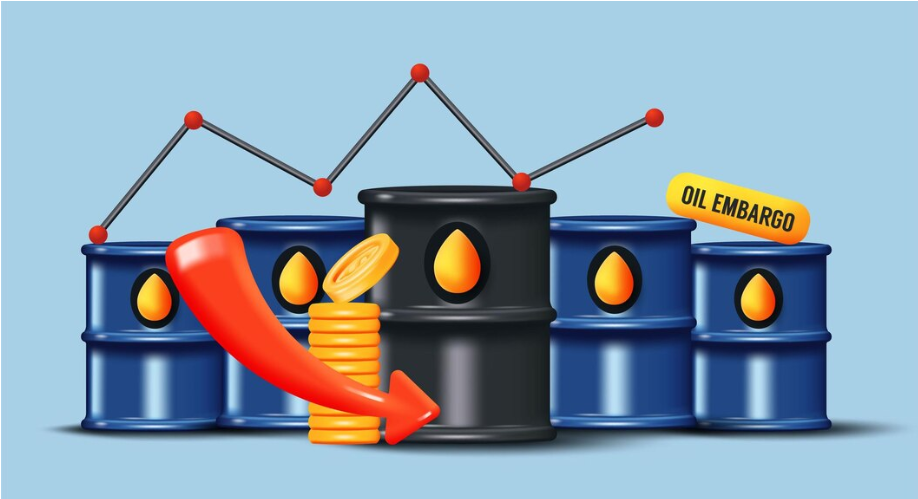Navigating the oil and forex markets these days feels like riding a roller coaster, doesn’t it? Every time you think you’ve figured things out, another twist comes along. For traders looking to stay ahead, handling these swings in oil and forex markets takes both strategy and a little know-how. Today, I’m sharing some strategic tips for managing these wild market swings—because let’s face it, timing and a good plan can make all the difference.
Understanding Today’s Oil and Forex Swings
The swings in oil and forex markets are driven by a mix of economic factors, global events, and market sentiment. With oil prices often reacting to global supply and demand (like any conflict or production cut by major producers), and forex rates impacted by economic policies, central bank actions, and investor confidence, there’s always something pushing these markets one way or another.
Why Oil and Forex Are So Volatile Right Now
Lately, both oil and forex markets have seen a lot of action. Rising inflation, central bank policies, and supply chain issues are playing their parts. For example, rising interest rates can push up the value of certain currencies, while oil prices can jump with even the smallest hint of supply shortages.
FXpricing offers real-time data on both markets, giving traders the latest information to act on quickly, whether it’s a swing in crude prices or a forex rate shift.
Top Tips for Trading Oil and Forex During Volatile Times
Trading in a volatile market can be tricky, but with a bit of insight, you can turn those swings to your advantage. Here are some tips to help navigate these ups and downs.
1. Stay Updated with Real-Time Data
When trading oil and forex, every second counts. FXpricing provides live forex and commodity prices along with historical data, so you’re never trading blind. It’s essential to follow live updates because market-moving news—like an unexpected economic report or a global event—can lead to sudden changes.
For instance, oil prices could jump overnight if a major producer announces supply cuts. If you’re on top of it, you can make swift adjustments to your trades before the market fully reacts.
2. Have a Strategy in Place
Impulse trading can be a recipe for disaster. Instead, plan your trades with clear strategies in mind. Here’s a basic approach for handling volatility:
- Set entry and exit points: Decide when you’re buying or selling before you even start trading.
- Use stop-loss orders: Protect yourself from big losses by setting a stop-loss order. That way, you don’t lose more than you’re comfortable with.
- Lock in profits with limit orders: It’s easy to get greedy, but sometimes it’s best to take profits when you hit your target.
By planning each trade with specific goals, you’re less likely to react emotionally, even when the market swings suddenly.
3. Leverage Technical Analysis
Technical analysis can be your best friend in a volatile market. This involves analyzing price charts, trends, and patterns to predict where the market might be headed next. FXpricing’s customizable charts and indicators make it easier to spot these trends and decide the best time to buy or sell.
For example, if you notice a “head and shoulders” pattern forming in oil prices, it might signal a potential reversal. Forex traders can use indicators like moving averages or the RSI (Relative Strength Index) to gauge if a currency is overbought or oversold.
Using FXpricing to Your Advantage
FXpricing isn’t just another data provider. It’s a one-stop shop for all things trading, from real-time prices and historical data to market analysis and customizable dashboards. Here’s how you can make the most of it.
Accessing Live Forex and Oil Prices
With FXpricing, you get instant access to live forex and oil prices, which is key for timing your trades. Markets can change fast, especially with commodities and currencies, so having up-to-date data helps you stay on top of your game.
Leveraging the Economic Calendar
An economic calendar is a must-have for any serious trader. FXpricing’s economic calendar keeps you informed on key events like central bank announcements, inflation reports, and GDP releases. Knowing when these events are scheduled can help you anticipate volatility.
For instance, if you know a major oil report is coming up, you can plan trades around it, or if a central bank is expected to raise interest rates, you might adjust your forex positions accordingly.
Using Customizable Dashboards
With FXpricing, you can customize your dashboard to show only the data you need, so you’re not distracted by information overload. Having a streamlined dashboard means you can focus on the markets that matter most to you.
Strategies to Avoid Common Trading Mistakes
Even experienced traders can get caught up in the excitement and make mistakes during volatile times. Here are a few tips to help you avoid common pitfalls.
1. Don’t Chase the Market
It’s tempting to jump into a trade when you see prices skyrocketing, but remember, what goes up quickly can come down just as fast. Instead of chasing the market, stick to your strategy and wait for the right setup.
2. Avoid Overtrading
Volatile markets can trick you into thinking there are more “opportunities” than there actually are. But overtrading can lead to burnout and mistakes. Choose quality trades over quantity.
3. Watch Your Emotions
Trading can be emotional, especially when there’s a lot of movement. Greed, fear, and impatience can lead to poor decisions. Take a deep breath, stick to your plan, and remember that it’s all about the long game.
FAQs
1. What are the main factors influencing oil and forex markets today?
- Right now, oil and forex markets are heavily influenced by inflation, interest rates, global supply chains, and geopolitical events.
2. Why is real-time data so important for trading?
- In volatile markets, prices can change quickly. Real-time data helps traders stay on top of these changes, allowing them to make timely decisions.
3. How can FXpricing help me in trading oil and forex?
- FXpricing offers live prices, historical data, customizable dashboards, and an economic calendar, providing the tools needed to stay informed and make strategic trades.
4. What is a stop-loss order, and why should I use one?
- A stop-loss order limits your loss on a trade by setting a specific exit price. It’s essential in volatile markets to avoid big losses.
5. Why should I use technical analysis in trading?
- Technical analysis helps you identify trends and patterns in price movements, giving you insights into potential future market directions.



